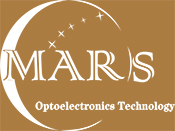

Definition of Glare:
Glare is a visual phenomenon that causes visual discomfort or reduces the ability to observe details or objects due to inappropriate brightness distribution or brightness range in the field of view, or extreme brightness contrast in space and time. It is one of the important causes of visual fatigue.
Principle of Glare:
Glare is caused by reflections of bright outdoor light on lenses and other surfaces. It has certain effects on the eyes and causes eye discomfort, and the glare generated during driving or outdoor sports may cause immeasurable hazards.
Classification of Glare: mainly disabling glare and uncomfortable glare
A: Disabling glare. Disabling glare is the glare that reduces people's visual function. It is the glare that reduces the visibility of visual objects, but does not necessarily create an uncomfortable feeling. (Physiological glare)
B: Uncomfortable glare. Uncomfortable glare refers to the glare that makes people's eyes uncomfortable, but does not necessarily reduce the visibility of visual objects. (Mental glare)
Other glare:
Blinding glare: Temporary blindness may be caused by high-intensity glare, such as welding arcs and automotive high beams.
Direct glare, indirect glare, and reflected glare, etc.
Glare
Unified Glare Ratings:
(Unified Glare Rating) The International Commission on Illumination (CIE) is a psychological parameter used to measure the subjective response of the light emitted by the lighting device in the indoor visual environment to the human eyes, which is abbreviated as UGR.
Glare Reduction Solutions
Solution one:
The light source adopts the direct light emission method, and the transparent parts are frosted with orange peel, and atomized to make the beam diverge and reduce the glare. At present, this anti-glare technology is widely used in the market. Advantages: simple process, suitable cost, high light efficiency, good anti-glare effect, and it meets the basic requirements of chemical sites.
Solution two:
The light source adopts the side light emission method, and adopts a series of measures such as optical-grade light guide plate, reflective sheet, anti-glare micro-structure prism film, diffuser film, frosted tempered transparent parts, etc. to eliminate high-angle light (glare), enhance the effective light in the center, and reduce UGR value. The industrial lighting (explosion-proof lamp) industry currently doesn’t have any program or products using this technology.
Advantages: good anti-glare effect, and soft light, etc.
Disadvantages: high cost, low light efficiency, complex process, and it needs clean workshops, etc.
The Understanding of Glare
1. The calculation formula of glare value,  where: Lb——background brightness (cd/m2); ω——solid angle formed by the light-emitting part of each lamp to the observer's eyes (sr); Lɑ——brightness of the luminaire in the direction of the eye to the observer (cd/m2); P - position index for each individual luminaire.
where: Lb——background brightness (cd/m2); ω——solid angle formed by the light-emitting part of each lamp to the observer's eyes (sr); Lɑ——brightness of the luminaire in the direction of the eye to the observer (cd/m2); P - position index for each individual luminaire.
2. According to the formula, the glare value in the lighting environment is related to many factors, and the glare value of the lamps cannot be specified separately.
3. With the same luminous flux, the glare control effect of LED lamps is basically the same as that of electrodeless lamps after being processed by glass orange peel and other processes. The LED lamps are made of side-emitting and anti-glare materials. The light source is changed from being back-illuminated to side-illuminated. After adding ripples or orange peel treatment to the transparent parts, the glare reduction effect is ideal.
4. The LED lamps can effectively improve the visual effect with the use of low color temperature, reducing the brightness of the entire lamp surface and increasing the luminous area. Through the adjustment of the glare angle, the glare value of LED lamps can be well controlled. Besides, the shading angle and the grid structure can be added and the installation height of the lamps can be increased .
5. Change the tempered glass to polyester plus astigmatism powder, and redistribute the light by using the diffuse reflection and diffuse transmission characteristics of the material to produce a soft and natural diffused light effect; the PC frosted cover needs to be in a specific area (without any strong acid and alkali, and without any organic solvents).
Summary: Although there are no glare-related standards in industrial places (refer to Architectural Lighting Design Standards-GB30054), glare does have psychological and physiological effects on staff; the lighting industry is demonstrating and researching the corresponding testing equipment and testing methods for glare; in the future, more and more attention will be paid to human health and safety, and reducing glare will be increasingly important for the human-induced lighting environment; currently, the company is communicating with China Academy of Building Research and actively participating in the drafting of glare standards.
Post time: Feb-28-2022







